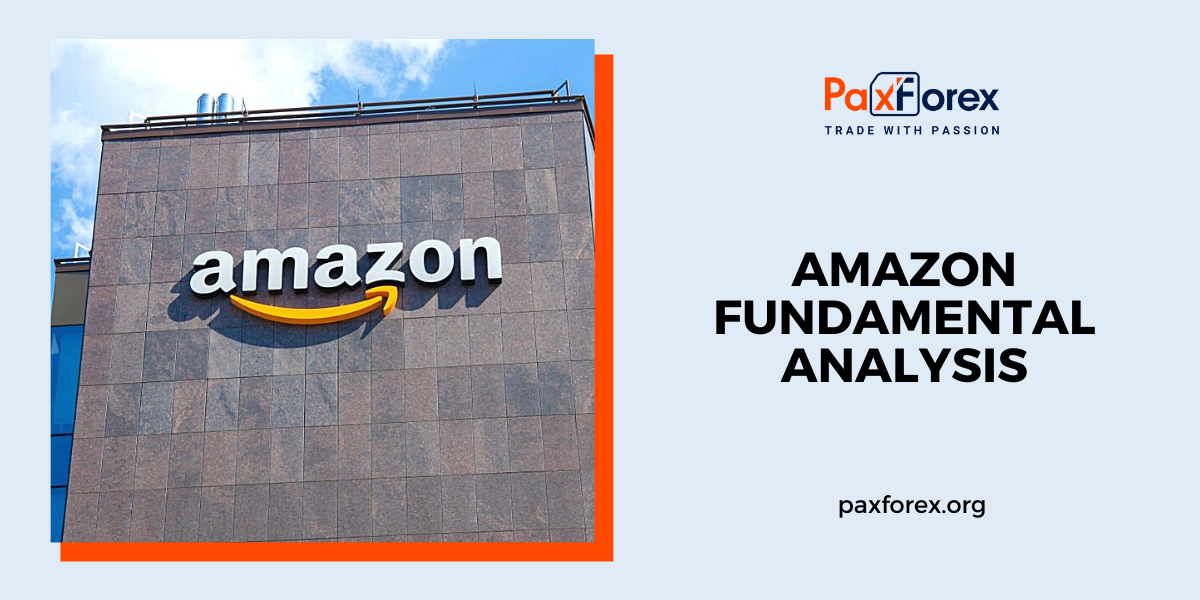
Source: PaxForex Premium Analytics Portal, Fundamental Insight
Judging by the market's reaction to Amazon's Q4 report, you'd think the e-commerce and cloud computing giant was a success. In a sense, it did. The company's stake in electric car company Rivian generated nearly $12 billion in revenue; Amazon Web Services (AWS) continues to operate at full capacity, growing rapidly and generating incredible profits; and the announced Amazon Prime price hike will generate billions in additional revenue.
All of this contributed to Amazon stock rising more than 10 percent on Friday, a big move for a company with a trillion in revenue. This rally after the earnings release has undone some of the damage done by the collapse in growth stocks over the past few months, though the stock is still down about 15% from recent highs.
On Friday, the market focused on the positives of Amazon's report, but there were also plenty of bad points that investors shouldn't ignore.
Amazon's Q4 sales were up just 9%, which can't be called a stunning result. The retail business in North America, by far the largest segment, matched that overall growth rate. AWS grew much faster, by 40%, while international segment sales were down 1%.
To be fair, the comparison was not an easy one. In the fourth quarter of 2020, Amazon's sales were up 38%, which is certainly a challenge. Consumers increased their spending on e-commerce at the beginning of the pandemic, but that tailwind seems to have disappeared. With stiff competition from traditional retailers like Walmart, Target, and Best Buy, as well as e-commerce companies like Chewy and Wayfair, slow growth for Amazon may be the new normal.
Along with slowing growth in its retail segments, the company's profits have fallen sharply. The North American segment had an operating loss of $206 million, down from nearly $3 billion in the fourth quarter of 2020, and the international segment's profit fell to $1.63 billion from $363 million.
AWS absorbed some of the losses, but overall operating profit still fell 50% year-over-year. The company cited more than $4 billion in expenses related to higher wages, higher prices, lower productivity, and order fulfillment network outages during the analyst call.
Amazon currently employs more than 1.6 million people, not counting the contractors who keep the delivery network running. The company is not known for having the best working conditions in its warehouses, so a competitive labor market could lead to serious employee retention problems. This could lead to further cost increases, slower deliveries, and upset customers.
The Prime price increase will help offset some of these inflationary factors and will be a test of Amazon's pricing strength in an increasingly competitive e-commerce market.
Amazon is focused on generating free cash flow. The company generated $31 billion in free cash flow in 2020, helped by a surge in demand caused by the pandemic.
The situation has changed. Over the past 12 months, Amazon's free cash flow has been negative at $9 billion. Even worse, free cash flow, which takes into account equipment acquired through leasing, was negative at $14 billion, compared to positive at $21 billion a year ago. That's a $35 billion difference.
This can be attributed in part to the fact that Amazon is investing more in its business. Total capital spending, including finance leases, will be about $60 billion in 2021, up from $44 billion in 2020. This increase in spending explains less than half of the sharp drop in free cash flow.
The rest is the result of a strong decline in operating cash flow. Last year, operating cash flow was $46 billion, down as much as $20 billion from 2020.
The first quarter of this year won't be any better. Amazon expects revenue growth of just 3%-8% year-over-year. Operating income will be between $3 billion and $6 billion, down $8.9 billion from the first quarter of 2021.
The operating profit forecast is worse than it looks. Earlier this year, Amazon increased the useful life of its servers and networking equipment, which will result in a $1 billion reduction in first-quarter depreciation expense. Even with this $1 billion benefit, Amazon probably won't have the same profits as it did last year.
It is important to remember that Amazon is an expensive stock. Based on net income for 2021, excluding profits from Rivian, Amazon is trading at about 75 times earnings. The company certainly has some serious competitive advantages, but the growth rate is now in the single digits, and profits excluding Rivian are plummeting.
Of course, one should never underestimate Amazon. But right now the picture is not looking good.
As long as the price is above 2798.00, follow the recommendations below:
- Time frame: D1
- Recommendation: long position
- Entry point: 3229.00
- Take Profit 1: 3569.00
- Take Profit 2: 3743.00
Alternative scenario:
If the level of 2798.00 is broken-down, follow the recommendations below:
- Time frame: D1
- Recommendation: short position
- Entry point: 2798.00
- Take Profit 1: 2527.00
- Take Profit 2: 2365.00













